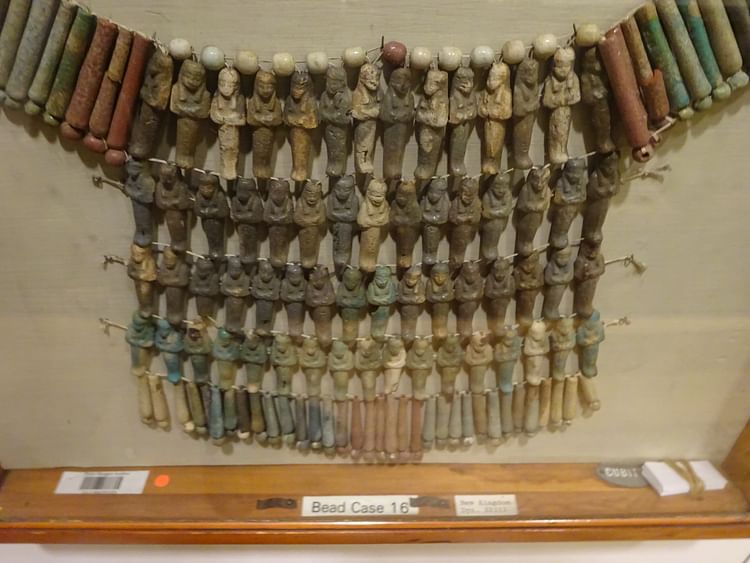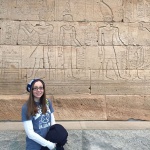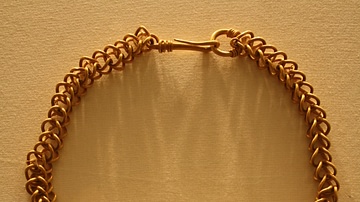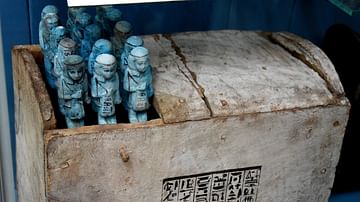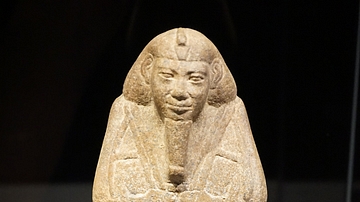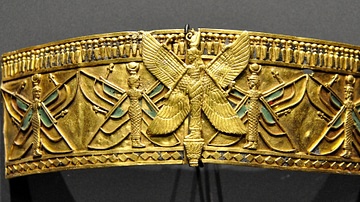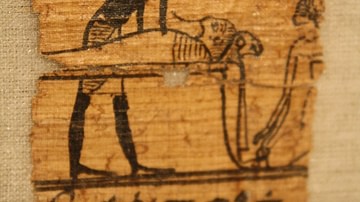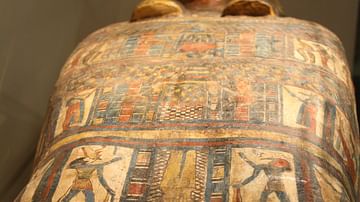Illustration
Shabtis are small statues that were buried with a deceased person and were meant to perform all manual labor tasks for them in the afterlife. Normally, shabtis were placed in tombs in shabti boxes and each was individually inscribed with a spell that described their particular job or function.
This unique broad collar (a type of necklace that was favored amongst the gods, pharaohs, and elite) is dated to the 21st Dynasty (11th-10th century BCE) and contains 62 faience shabti figures that are each about four centimeters in height. While broad collars were worn while a person was living, mummies were also buried wearing them.
Not much is known about the specific use of this piece because it is quite unique. The function of the shabtis that adorn the necklace is questionable. Were the shabtis supposed to be worker shabtis, or were they merely meant for the decoration of a mummy?
(Petrie Museum of Egyptian Archaeology, London, England)
Cite This Work
APA Style
Lesar, N. (2021, December 22). Shabti Broad Collar. World History Encyclopedia. Retrieved from https://www.worldhistory.org/image/15010/shabti-broad-collar/
Chicago Style
Lesar, Nicole. "Shabti Broad Collar." World History Encyclopedia. Last modified December 22, 2021. https://www.worldhistory.org/image/15010/shabti-broad-collar/.
MLA Style
Lesar, Nicole. "Shabti Broad Collar." World History Encyclopedia. World History Encyclopedia, 22 Dec 2021. Web. 18 Apr 2024.
